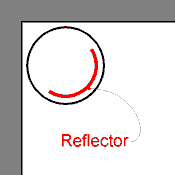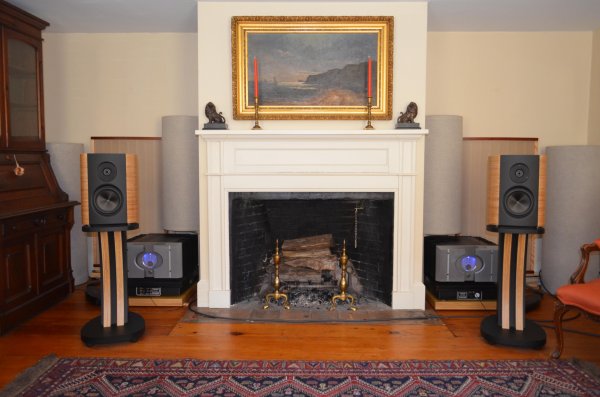ASC tube traps: effect of their absence
- Thread starter Al M.
- Start date
You are using an out of date browser. It may not display this or other websites correctly.
You should upgrade or use an alternative browser.
You should upgrade or use an alternative browser.
Out of curiosity, how does the reflective side work? Apart from the silver button there doesn't seem to be any difference in the material. For the life of me I can't see how one side would reflect more than the other...
It should definitely feel different. The reflective side is a diffuser while the other side simply absorbs. You should be able to hear the difference immediately, it's kind of like an adjustable diffuser depending on how you turn the trap. You can kill the life in your system with the absorptive side very quickly.
Out of curiosity, how does the reflective side work? Apart from the silver button there doesn't seem to be any difference in the material. For the life of me I can't see how one side would reflect more than the other...
Off their website:
TubeTrap[SUP]™[/SUP] Technical Details

| |||||||||||||||||||
| Absorption Coefficients | |||||||||||||||||||

| 
[SUP]*[/SUP]Tested in corners with reflector panel facing into the room | ||||||||||||||||||
| Design Rolloff & Crossover Frequencies | |||||||||||||||||||
|
steve williams
Site Founder, Site Owner, Administrator
I had all 5 diameters in my last room
The other I recall Art Noxon told me when I was installing them is that there is also a top and bottom to each of them depending on the label in the center. Because i had tall ceilings I was using two of these on top of the other. It was suggested that the top one be turned over so that the top of each trap touches one another
The other I recall Art Noxon told me when I was installing them is that there is also a top and bottom to each of them depending on the label in the center. Because i had tall ceilings I was using two of these on top of the other. It was suggested that the top one be turned over so that the top of each trap touches one another
I had all 5 diameters in my last room
The other I recall Art Noxon told me when I was installing them is that there is also a top and bottom to each of them depending on the label in the center. Because i had tall ceilings I was using two of these on top of the other. It was suggested that the top one be turned over so that the top of each trap touches one another
That is most interesting. I have had not previously heard about that. I have four 16" traps, but also four corners on the front wall because of the fireplace, so I have found the best result in my room is one trap in each of the four corners with the reflective dots facing each other rather than rotated out to the room or in toward the corners. I also have Acoustic Revive diffusion panels on the front walls between each set of Traps. Photo below:

How are the Acoustic revive panels, were they a big positive difference?
Yes, my friend ordered them and had them delivered to my house because he was on vacation. I opened them up and tried them in my system and immediately ordered a pair for myself. In my installation, they increased the sense of space and depth behind the speakers which is quite challenging because of the protruding fireplace. I have not experimented lately with removing them since other changes to some of my components, but I am very pleased with them. Perhaps they are the reason that the Traps sound better without the reflective side facing the listener. That might introduce too much reflection from the front of the room. Right now the balance seems right, though my bass still has some humps. I would like to try 20" Traps or at least four more 16" Traps so that I could stack them, but I have always hesitated because my wife still uses this room and it might be just too much.
Last edited:
steve williams
Site Founder, Site Owner, Administrator
Pricing for full round tube traps;
| Full Rounds* Sized up to: | 2? | 3? | 4? | 5? | 6? | 7? | 8? |
| 9? (110 Hz) | $380 | $472 | $498 | For Long TubeTraps, please call for availability and price. | |||
| 11? (90 Hz) | $386 | $488 | $512 | ||||
| 13? (70 Hz) | $462 | $518 | $542 | ||||
| 16? (55 Hz) | $594 | $648 | $688 | ||||
| 20? (40 Hz) | $718 | $764 | $854 | ||||
| 24? (25 Hz) | $859 | $918 | $1046 | ||||
| (ship via truck freight) |
. . . The other I recall Art Noxon told me when I was installing them is that there is also a top and bottom to each of them depending on the label in the center. Because i had tall ceilings I was using two of these on top of the other. It was suggested that the top one be turned over so that the top of each trap touches one another
This is interesting. I stack three Tubetraps to reach almost to the top of my ceiling. Do you know why it was suggested to have the tops meet in the middle? (What is happening acoustically?)
Similar threads
- Replies
- 0
- Views
- 228
- Replies
- 10
- Views
- 2K
- Replies
- 4
- Views
- 918
- Replies
- 11
- Views
- 3K

